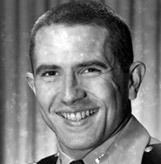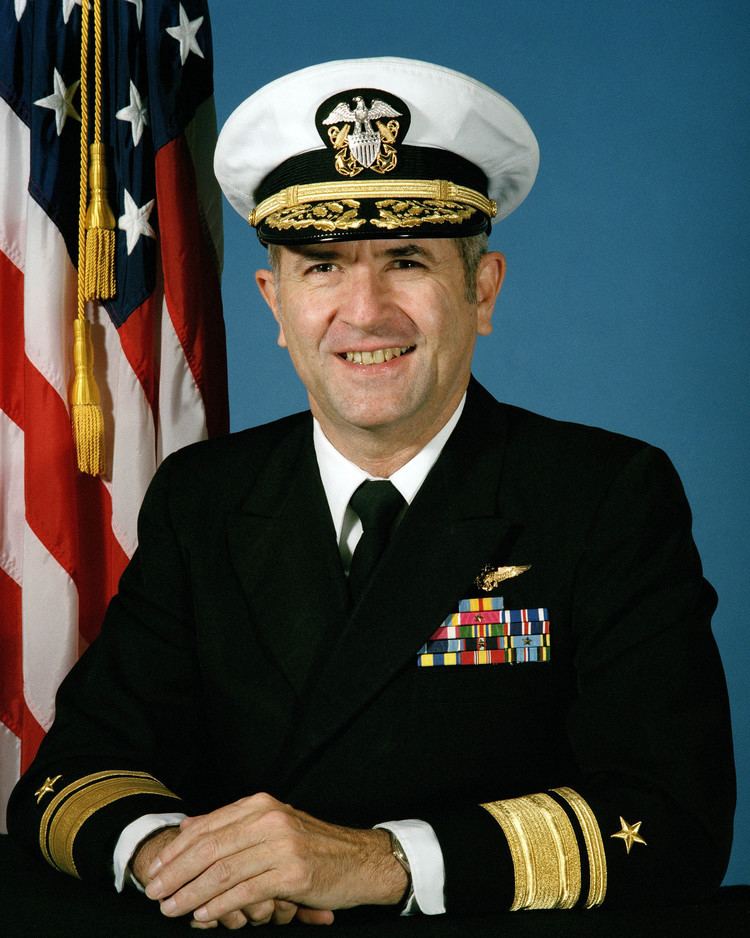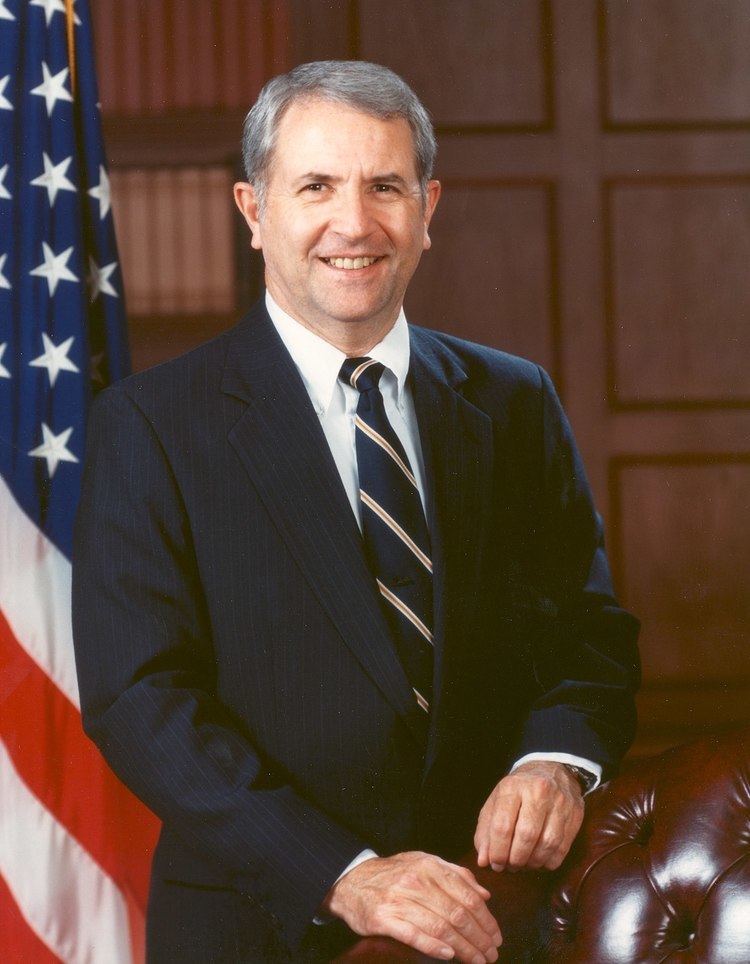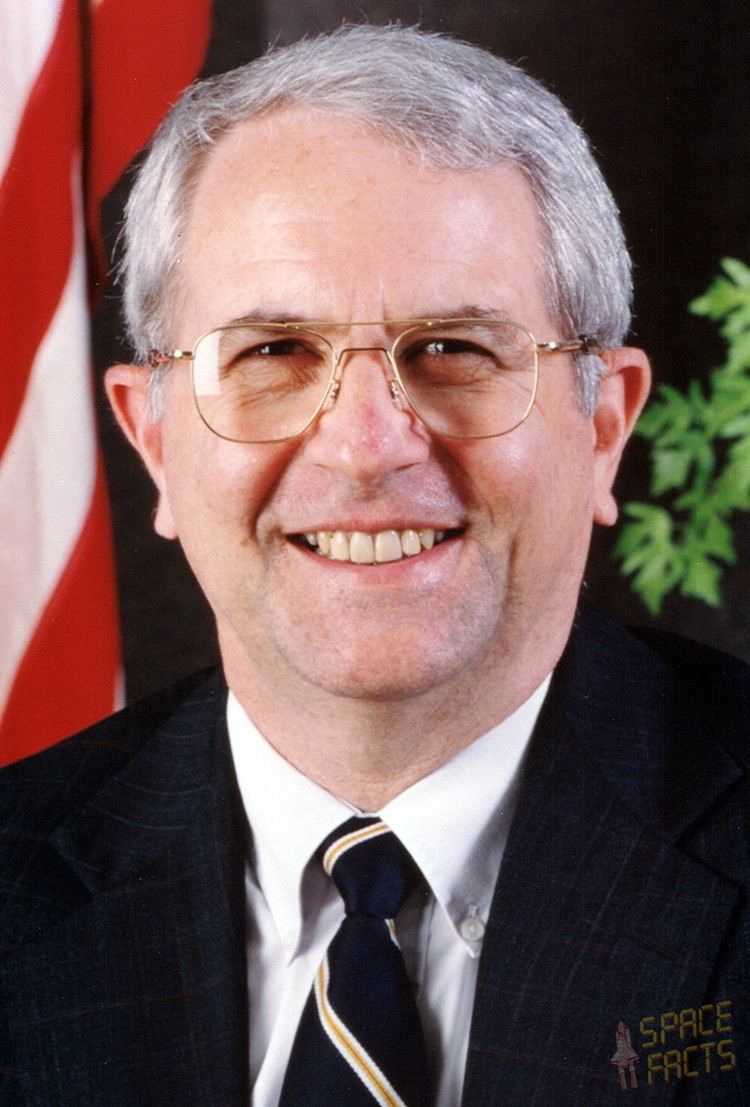Nationality American Time in space 8d 07h 21m Space agency NASA | Role Astronaut Status Retired Name Richard Truly Other occupation Test pilot | |
 | ||
Alma mater Georgia Institute of Technology, B.S. 1959 Education Georgia Institute of Technology Similar People Joe Engle, C Gordon Fullerton, Daniel Brandenstein, Guion Bluford, William E Thornton | ||
Other names Richard Harrison Truly | ||
Orbiter 2010 - STS-8 Launch Coverage vs Simulation
Richard Harrison Truly (born November 12, 1937) is a retired Vice Admiral in the United States Navy, a former fighter pilot, former astronaut for both the United States Air Force and NASA, and was the eighth Administrator of the National Aeronautics and Space Administration (NASA) from 1989 to 1992. He was the first former astronaut to head the space agency.
Contents
- Orbiter 2010 STS 8 Launch Coverage vs Simulation
- Early life and education
- NASA career
- Return to flight
- Post NASA
- Decorations
- References

After his departure from NASA, he led the Georgia Tech Research Institute from 1992 to 1997, and the National Renewable Energy Laboratory from 1997 to 2005.

Early life and education

Born November 12, 1937, in Fayette, Mississippi, Truly attended segregated schools in Fayette and Meridian, Mississippi. He received a Bachelor of Science degree in Aeronautical Engineering from Georgia Institute of Technology in 1959. He was a member of the Kappa Alpha Order. He was active in the Boy Scouts of America achieving its highest rank, Eagle Scout.

Being a member of the Navy ROTC at Georgia Tech, Truly entered the U.S. Navy, where he was ordered to flight school and was designated a Naval Aviator on October 7, 1960. His initial tour of duty was in Fighter Squadron 33 (VF-33) where he flew F-8 Crusaders aboard USS Intrepid and USS Enterprise. He made more than 300 carrier landings.
From 1963 to 1965, Truly was first a student and later an instructor at the U.S. Air Force Aerospace Research Pilot School at Edwards Air Force Base, California.
NASA career
In 1965, Truly was among the first military astronauts selected to the United States Air Force's Manned Orbiting Laboratory (MOL) program in Los Angeles, California. He joined the NASA Astronaut Corps in August 1969 after the cancellation of the MOL program. At NASA, he was a member of the astronaut support crew and capsule communicator (CAPCOM) for all three of the manned Skylab missions in 1973, and the Apollo-Soyuz mission in 1975. He was assigned to one of the two-man crews for the Approach and Landing Tests of the Space Shuttle Enterprise in 1977, and the STS-2 mission in 1981, on which he became the first man to be launched into space on his birthday. Truly served as commander of STS-8 in 1983. After STS-8, Truly left NASA to become the first commander of the Naval Space Command.
Return to flight
Three weeks after the Space Shuttle Challenger disaster, Truly returned to NASA to become NASA's Associate Administrator for Space Flight on February 20, 1986. His primary task was to watch over the Space Shuttle's return to flight status. Along with that, he was also responsible for such long term issues as whether or not Challenger would be replaced, the role the Shuttle would play in the future and the mixture of expendable spacecraft and the shuttle for upcoming missions. While it only took a few days to determine the technical reason for the accident, sorting out the root cause was more difficult. In the end, it took Truly and NASA's "Return to Flight" program 31 months before the Space Shuttle Discovery successfully flew on September 29, 1988 with STS-26. In March 1986, Truly noted in a memo that there were several actions NASA needed to accomplish before launching another Shuttle flight. They included "Solid Rocket Motor joint redesign, Critical Items review, and Operations and Maintenance Instructions review".
Truly was named to head NASA as its eighth Administrator in May 1989. He held this position until May 1992. He was credited by Carl Sagan with interceding in an internal dispute regarding whether Voyager 1 should be commanded to take one last photograph of Earth before completing its primary mission. The resulting photograph has since become known as the Pale Blue Dot photograph. He retired from the Navy as a Vice Admiral shortly before becoming NASA Administrator.
Post-NASA
After leaving NASA, Truly became Vice President and Director of the Georgia Tech Research Institute, part of the Georgia Institute of Technology, in Atlanta, Georgia. He served in this role from 1992 to 1997.
Then he served as Director of the Department of Energy's National Renewable Energy Laboratory and as Executive Vice President of the MRIGlobal (formerly Midwest Research Institute) from 1997–2005.
In May 2007, Retired Vice Admiral Richard Truly testified before the U.S. Senate Committee on Foreign Relations as a member of a military advisory board on the subject of the threats to U.S. national security posed by global climate change.
In 2010, Truly was appointed to the Board of Trustees of the Colorado School of Mines by Governor Bill Ritter. He is currently the Vice Chairman of this board.
Truly is married and has three children.
Decorations
Truly was awarded the following military decorations and government awards:
In 1988, he was awarded the Society of Experimental Test Pilots James H. Doolittle Award. He also received that year the Collier Trophy for his role in assisting NASA's return to launching manned missions after the Challenger disaster.
